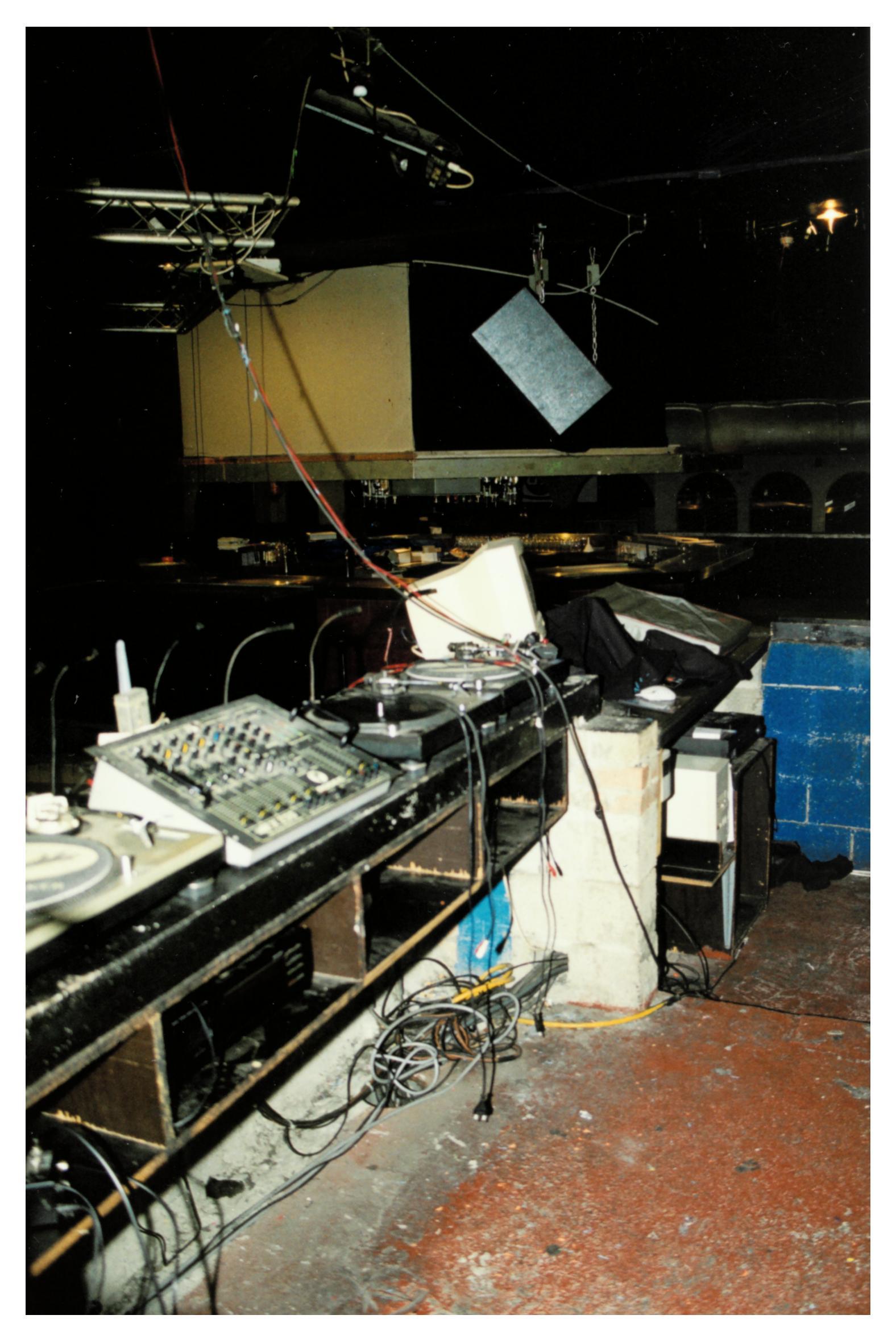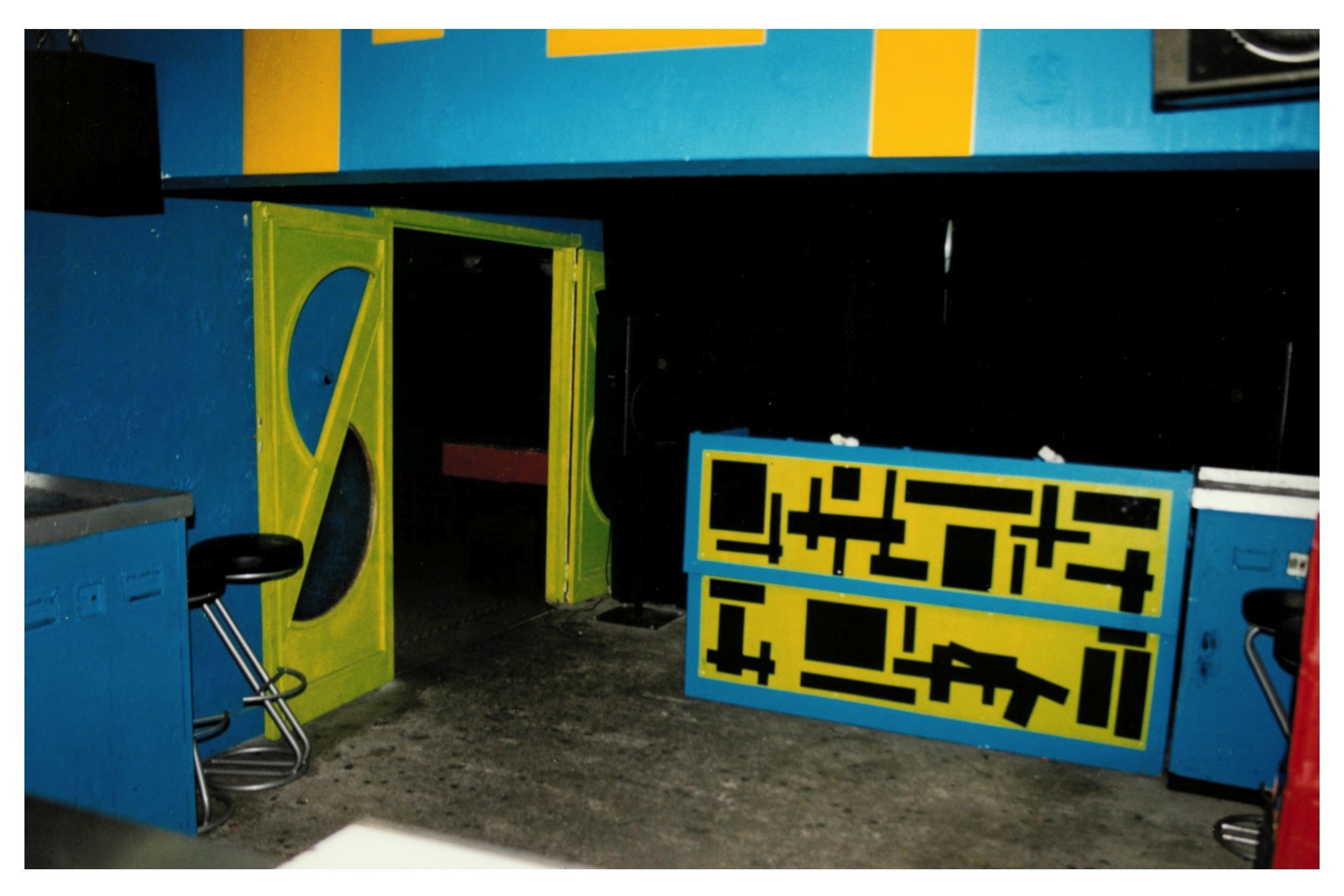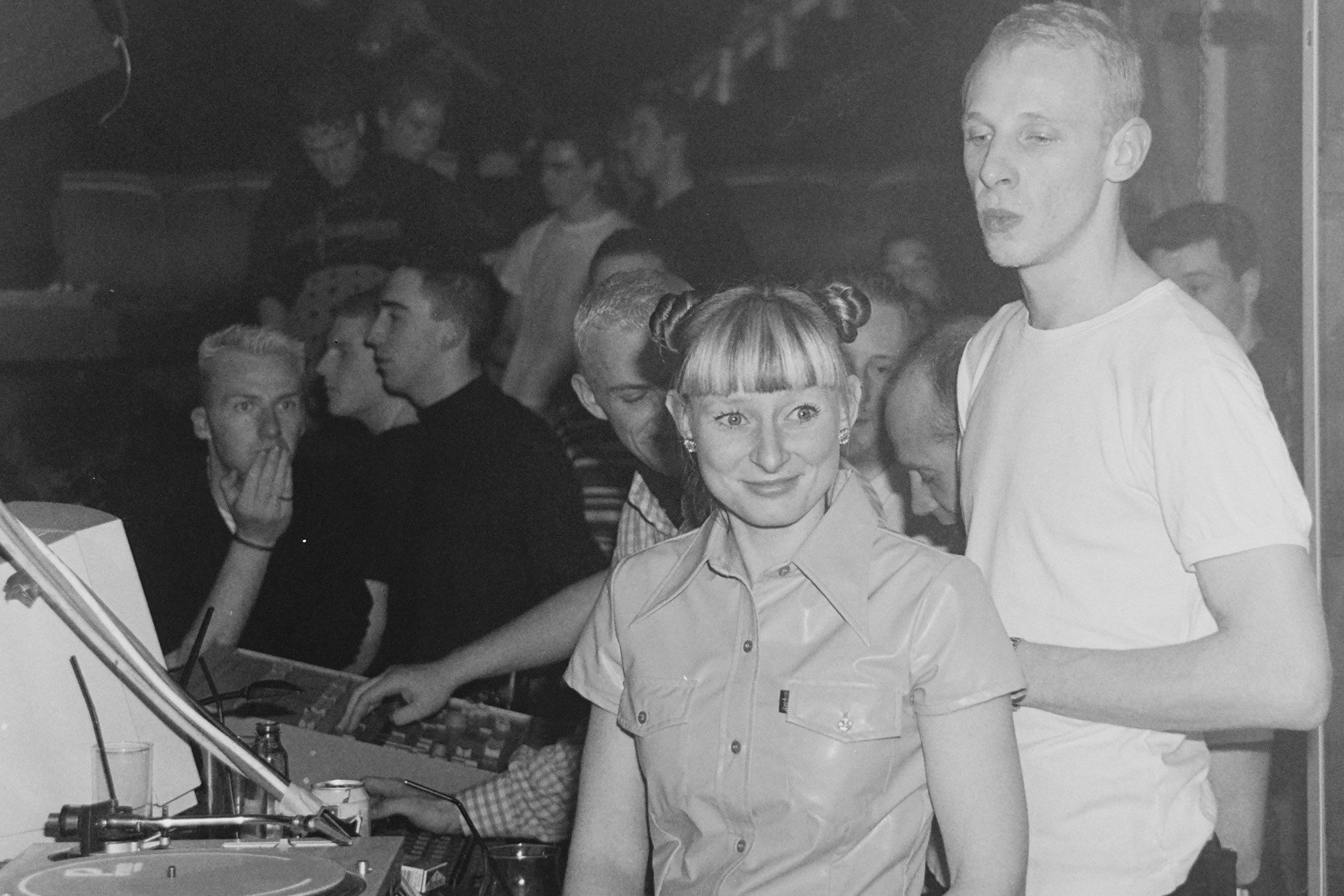 Features
Features
How Fuse brought Detroit techno to the heart of Brussels
In an excerpt from Fuse – 30 Yrs Of Making Noise, a new book celebrating the Belgian clubbing institution’s three decade run, author Koen Galle traces its musical origins and inspirations
It took Peter Decuypere and Thierry Coppens about six weeks to set up Fuse after Peter’s eureka moment while attending Thierry’s La Demence party. Thierry already used the venue for his La Demence nights, so that part of the job was relatively easy. But what else was needed? A name! Weekly line-ups! A logo! Printed artwork! Promotion! The word needed to spread. And time could not be wasted since Thierry’s La Demence club nights on Saturday evenings weren’t attracting enough visitors to pay the rent. The future of his new venture was at stake.
A new club required a new name. Peter Decuypere had fallen in love with Detroit techno music, a new type of electronic music he admired for its innovation. Peter’s quest for a name for his new techno club led him to Richie Hawtin, a British-Canadian DJ and musician involved with Detroit techno’s second wave, who used the pseudonym F.U.S.E. for his first releases. F.U.S.E. stands either for Futuristic Underground Subsonic Experiments, Futuristic Underground Sound Experiments or Further Underground Sound Experiments.
"I knew Peter was a fan of my work and all the music from the Detroit area then. This was our initial bond. We could all feel that we were completely in love with the music, and we just wanted to share it with everyone. When Peter opened the club, it felt like it was his way of sharing all of his music passion with the rest of the world, and at that time, every new club that opened was a step in creating the incredible culture and scene that we enjoy and take for granted today." (Richie Hawtin, 2024)
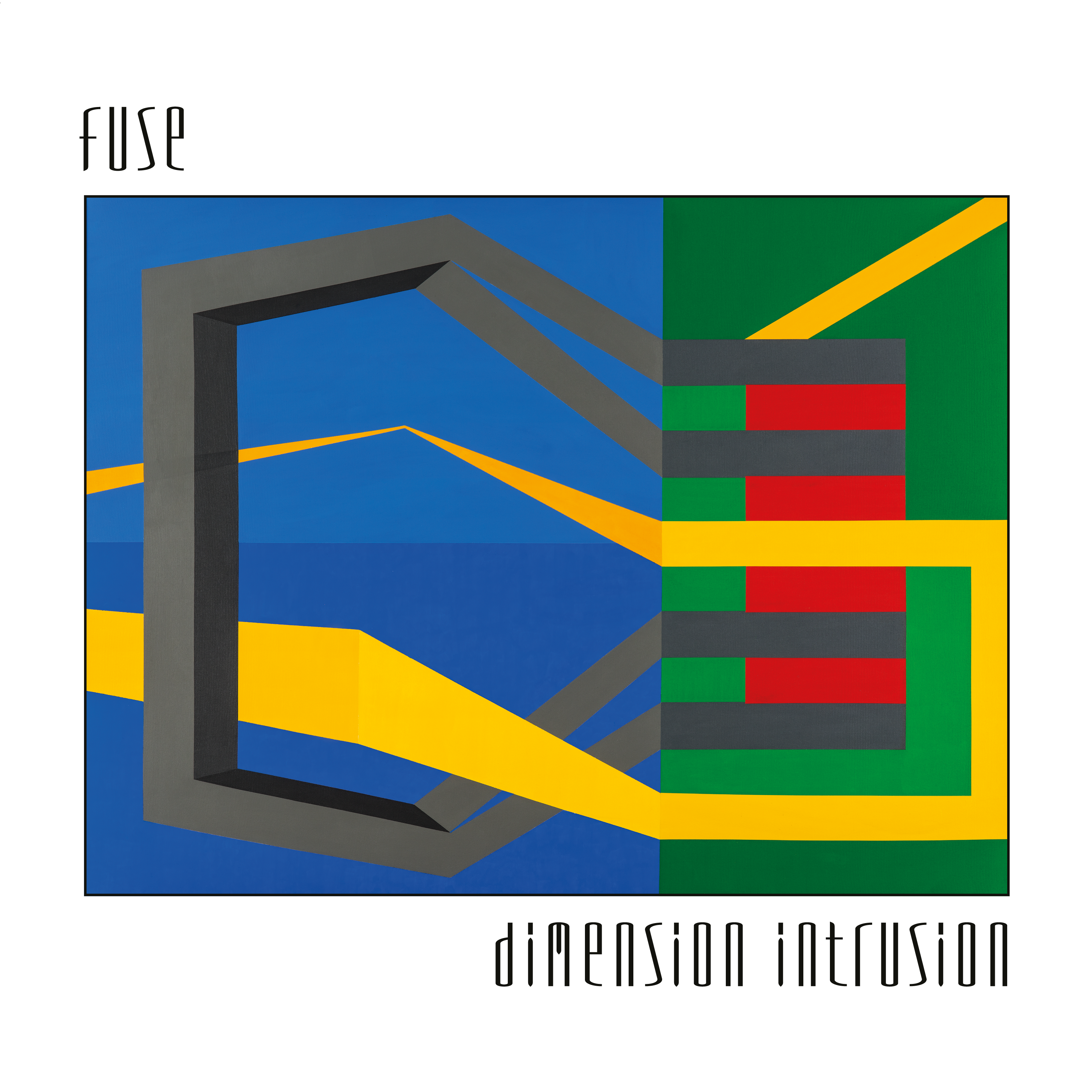
Peter Decuypere got into Detroit techno thanks to the exciting new records his friends used to make. At Kuurne nightclub Fifty Five, he befriended three people named Jan: Vanneste, Berquin, and Van Den Bergh.
Jan Van Den Bergh was a musician and studio producer whose 1983 punky electro-pop band Wet released the iconic 'That’s The Game'. Around the turn of the decade, he got involved as a studio engineer for USA Import in Antwerp while releasing his creations, such as the new beat classic 'Businessmen' in 1988 and the esteemed 'Mappa Mundi’ album in 1990. He became the only Belgian with his name credited on a Strictly Rhythm record, the prolific and revered New York City-based house label. Later, Jan Van Den Bergh got hired at Indisc, an influential Belgian label that released acts such as The KLF and licensed tracks from American artists like Carl Craig, Kevin Saunderson, and Derrick May. Indisc also released numerous compilations focusing on the new Detroit techno sound. Jan was at the forefront of Indisc’s exploitation of these new sounds and founded its sublabel Buzz Records but left the company while working on Buzz’s 'Virtualsex' compilation. After a short period at R&S Records, Jan Van Den Bergh moved to Amsterdam, where he continued working for various labels. As a DJ and creator, he turned his attention to downtempo music.
Read this next: How to have the perfect 24 hours in Brussels
Jan Vanneste was Peter’s resident DJ at Fifty Five and a passionate fan of acid house and techno music. He started working for Indisc in 1989, hunting for licences of records that worked well in his DJ sets. He continued his career in music as co-owner of N.E.W.S. Records.
Jan Berquin worked for Indisc’s sublabel Buzz Records, whose Transmat and Virtualsex compilations in 1993 were pivotal in bringing this new sound to Belgium. In 1994, he founded Humanity Music, a sublabel of USA Import Music, and released music under the names Quin² and Zoot. He later joined the distribution branch of N.E.W.S. Records, where he still works today.

In their hurried search for a logo, Peter Decuypere and Thierry Coppens borrowed one. What would be completely unrealistic and even needlessly risky in today’s digital and global world felt like a good idea at the time. In this new and exciting house music community, where everyone knew and helped each other, it wasn’t entirely bonkers to copy the logo from the British Warp Records – not a competing club, but a record label – and add Fuse’s name on top. It was less a steal and more a tribute, hinting at the new techno music that Warp Records released and that would be programmed at Fuse.
"Our artwork was a testament to sample culture. Armed with many ideas and images cut from magazines or other media, I went to a printing company at Quai aux Briques. The company’s in-house designer, Marc, who had already been creating all the artwork for La Demence, had one of the first Mac computers. I explained my ideas to him, which he converted into actual artwork. I had never heard of an image’s resolution or anything like that, and the technology available wasn’t as advanced as it is today, but every time, Marc was able to come up with something. He didn’t intervene too much with his own ideas or identity as a designer; he mostly executed my vision, which worked well for me." (Peter Decuypere, 2024)
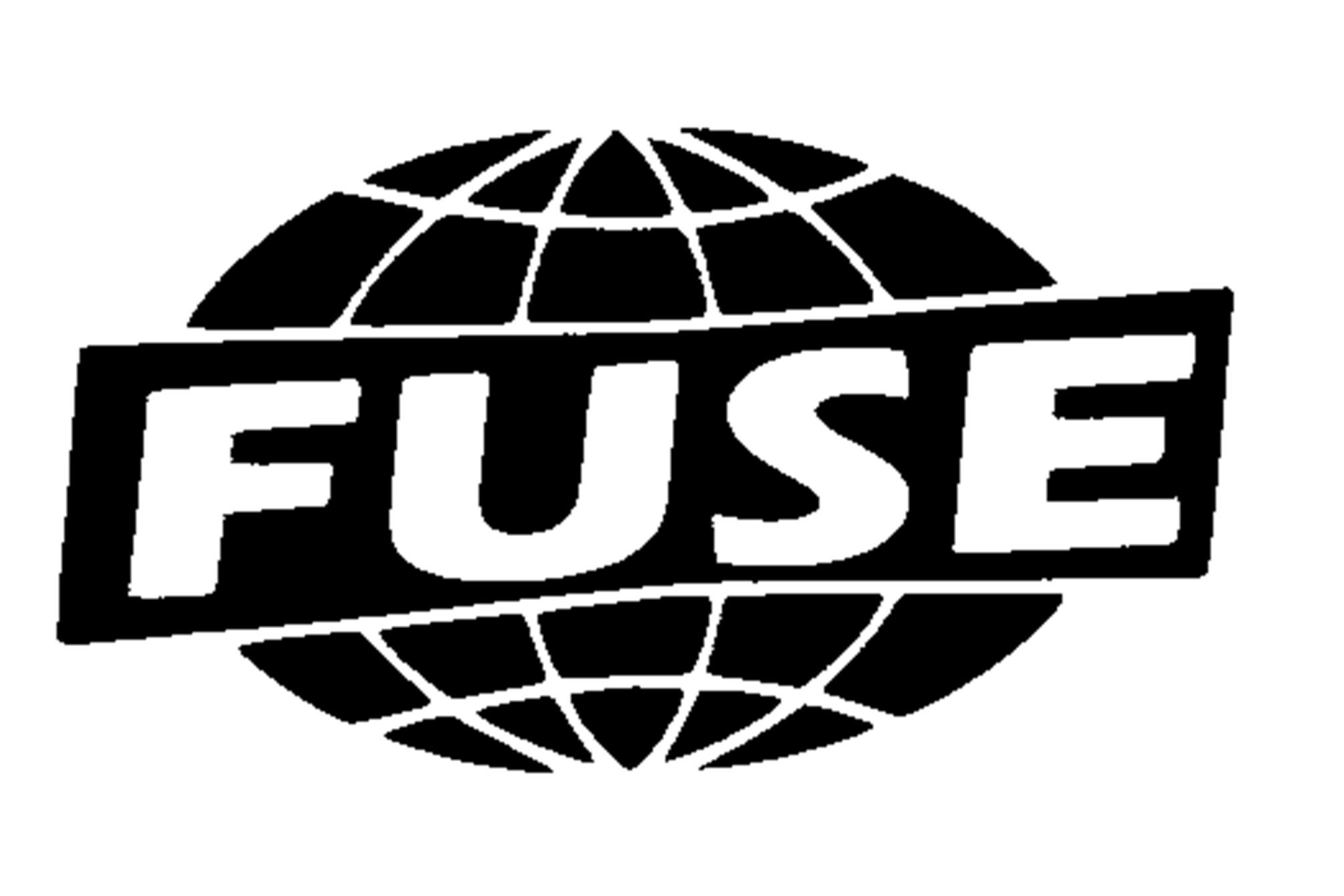
The tracklist of the first compilation CD by Fuse, released in 1995 with the title 'I ♥ Fuse – Overwhelming After Club Techno' and compiled by Peter Decuypere, is another testimony of the musical world from which Fuse originates. Peter chose tracks by Laurent Garnier and Shazz as Choice, Carl Craig, Richie Hawtin, and Mark Pritchard, among others, to represent his club where, “on those magical moments, the crowd fuses with the music and the people only open their eyes to check if they are still in heaven or still on earth” as he aptly explains in the CD’s liner notes.
Read this next: “A total experience”: How Fuse is transforming Brussels into a techno hotspot
"I got into electronic music around 1995 or 1996 when I was 18. I bought many CDs at the time, including the I ♥ Fuse compilation. The CD, a kind of deep, Detroit techno, ambient-like compilation album, had a few tracks that blew my mind. It became a blueprint, a reference for everything else that followed. Although I had no real framework or knowledge of the music, I loved all the tracks: they were not too hard, melodic, simply beautiful, and different from other clubs and their compilation albums. Fuse, for me, even 10 years before I first walked through its doors, stood for the real underground techno sound." (Joris Voorn, 2024)
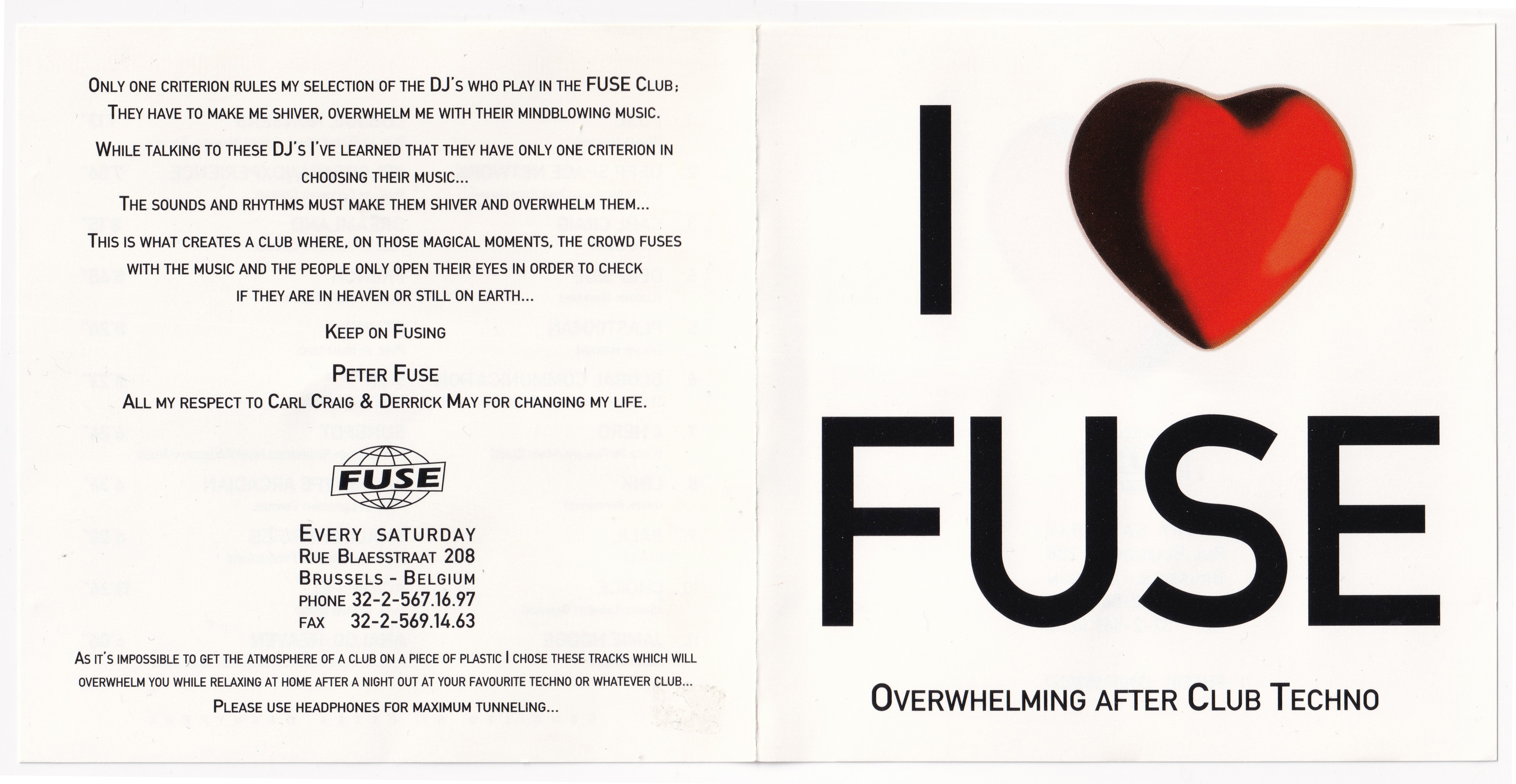
The opening night of Fuse was on Saturday, April 16, 1994. Minutes before 11:PM, when they unlocked the doors for the first time, Peter Decuypere and Thierry Coppens did a final check of all rooms. They were nervous but incredibly excited. They had found the appropriate staff – many recruited from Fifty Five or La Demence – and two DJs. Both Belgians, DJ Quinten controlled the main room downstairs, while DJ Pierre had the keys to the second room upstairs.
The club still looked more or less the same as when it was called El Disco Rojo, including the alcoves and balconies, although the walls were now painted in blue and gold with abstract and futuristic patterns. At the entrance, the neon signs with the logos of the previous clubs were still present but unlit, and a large banner revealed the new occupant.
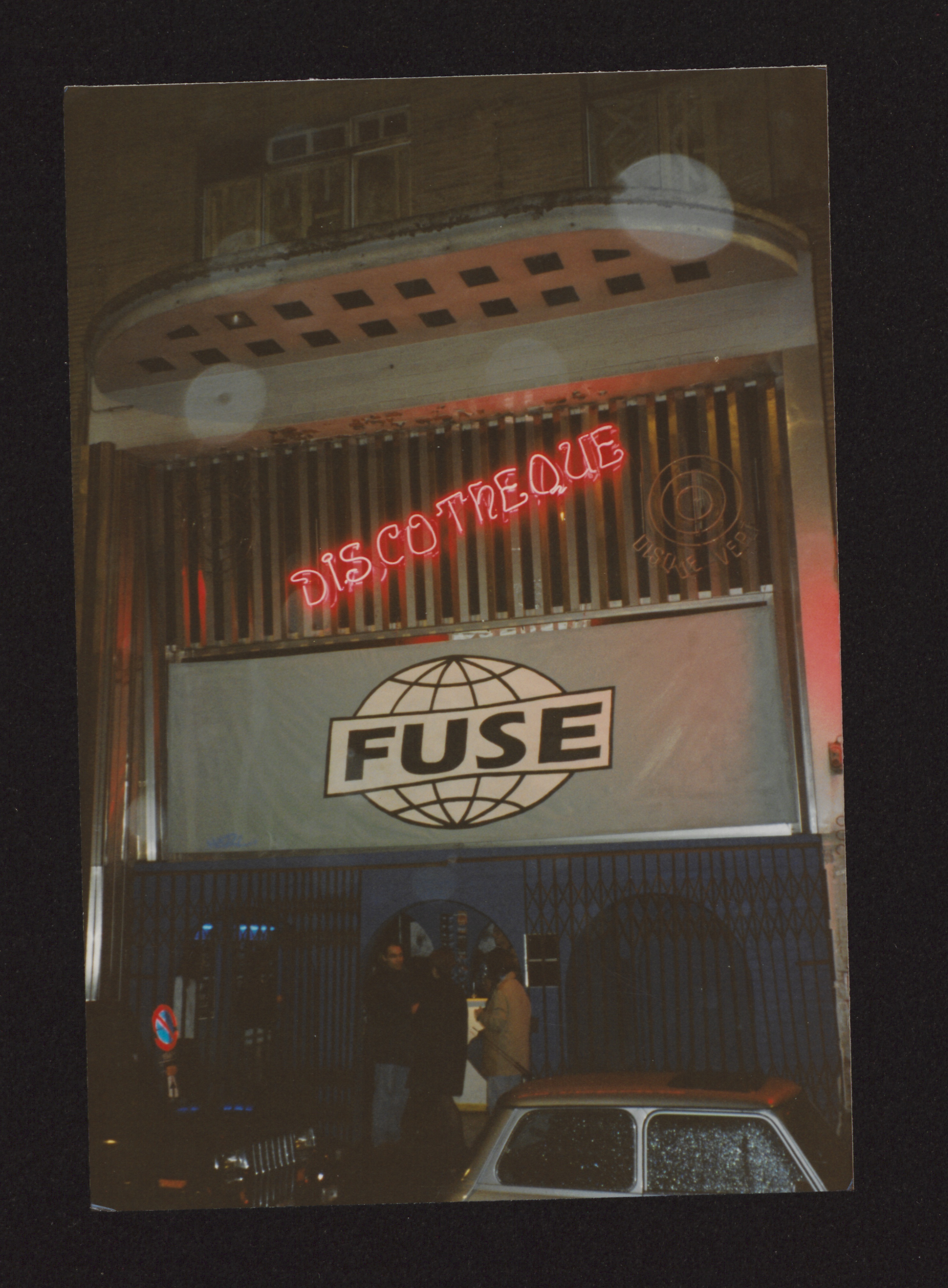
Peter Decuypere had met DJs Quinten and Pierre during his time at Fifty Five. Quinten Tygat was obsessed with techno music and had operated as a light jockey and, on a few occasions, as a DJ at Fifty Five. Pierre Noisiez grew up in Tournai, in the province of Hainaut, close to the border with France and a 30-minute drive from Kortrijk. In his teens, all of Pierre’s pocket money went to records. He started organising parties with friends in Tournai, while Zanzibar in Kortrijk gave him a weekly slot at the booth. Pierre went deep into the emerging garage house vibe, along with New Jersey and British house, learning to match his beats from house to disco and back again. After Zanzibar came Fifty Five, Pierre met Koen Van Immerseel, DJ Koenie, the resident DJ at the notorious house club Café d’Anvers. Suddenly, he found himself at the decks in Antwerp every Sunday night. Next, Vaudeville in Brussels offered him a residency, and then Peter Decuypere called, asking him if he’d like to join a new club in Brussels.
"In those days, Peter Decuypere would drink at Zanzibar before heading to his own club, Fifty Five. That’s how we met. His resident DJ Jan Vanneste invited me to come by with my records. I was allotted the last hour of the night, mixing while he went out looking for girls. I also played on the club’s closing night. It was the first time my name ever appeared on a flyer." (Pierre Noisiez, 2024)
Read this next: Abrupt festival is an intriguing, unpredictable showcase of global sounds and subcultures
The announcement flyer mentioned a chill-out room and robust soundsystems. The entry cost was 350 BEF. The flyer had an information phone number to call, but it didn’t start with the Brussels 02 area code.
"This was a few years before the internet broke through, so you had to provide some kind of medium for people to get in touch if they had questions. I mentioned the phone number of my home in Bellegem, near Kortrijk, as I was still living with my parents. In Brussels, I was renting a student room. I connected an automatic answering machine that I could remotely operate, which was very high-tech then." (Peter Decuypere, 2024)
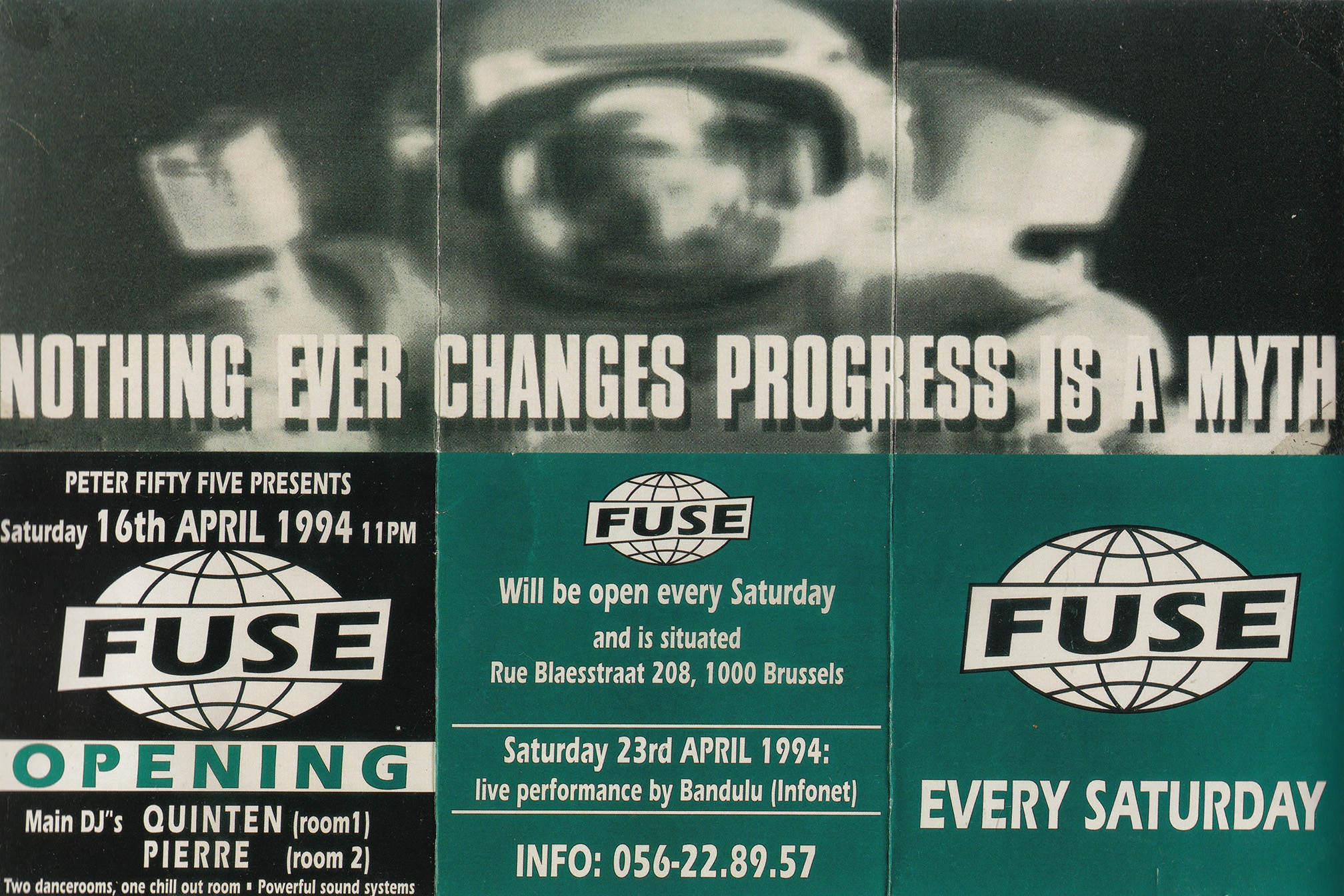
A feature in Out Soon mentioned Fuse as a new trance club opening in Brussels, taking over Saturday night from La Demence. Trance? Ah, what’s in a name! The journalist was confident that things would work out for Fuse, a prophecy based on testimonials from clubbers who attended the opening night, and because the avant-garde Peter 55 was in charge, already a celebrity in the Belgian house music scene.
Fuse’s opening night was a moderate success. The club wasn’t packed to capacity, but enough people turned up to put a smile on the faces of Peter Decuypere and Thierry Coppens. No official statistics were recorded in the books, but estimates run between 500 and 800 visitors. A few remarks were scheduled for the debriefing meeting the morning after. First, the so-called powerful soundsystem seemed underwhelming, especially for the new and poignant Detroit techno music being programmed at Fuse. Second, most people spent most of the night on the first floor, in the smaller and cosy second room, where DJ Pierre played uplifting house music. The innovative and exciting Detroit techno music that DJ Quinten played in Fuse’s main room, which Peter had fallen in love with, wasn’t taking off. But that would change.
"On the opening night at Fuse, I played mostly uptempo, so-called happy house. The centres of attention in our scene were RoXY in Amsterdam and Café d’Anvers in Antwerp. Among the most important DJs were Dimitri and Marcello from Holland and Koenie and Steve Cop from Antwerp.
"The new techno music from Detroit was integrated little by little. We all started to play tracks like 'Star Dancer' by Red Planet in the middle of our sets. 'Rushed' by 69, an alter ego of Carl Craig, was another techno record from Detroit that left us flabbergasted when we first heard it. The power of this track was unbelievable, and although I didn’t quite grasp its origins at first, I got goosebumps from the sheer excitement of a new style of music that was about to be unleashed." (Pierre Noisiez, 2024)
Fuse – 30 Yrs Of Making Noise available to order via Fuse’s official website
